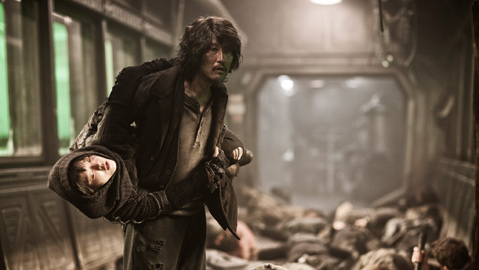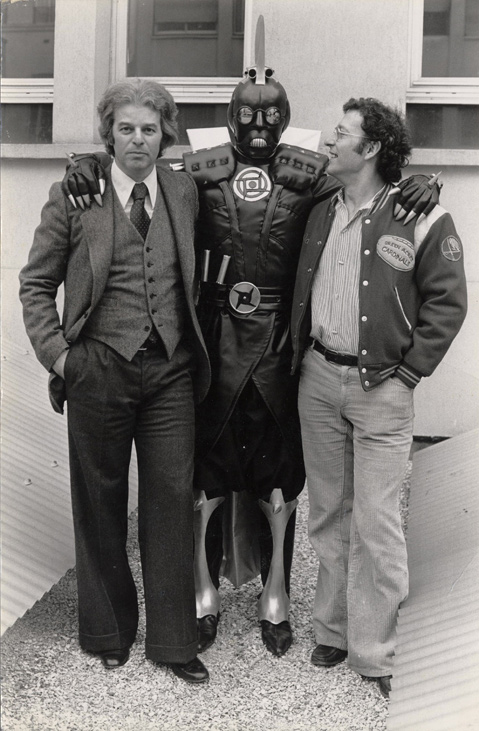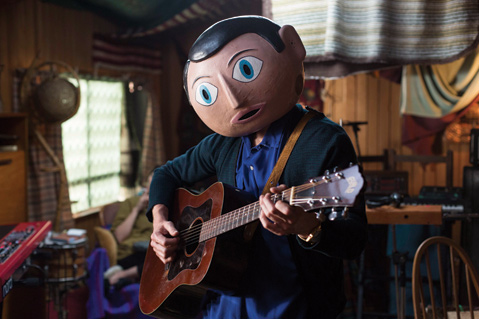TV Is the New Art House
Why You Probably Didn’t See the Best Films of 2014

As a young movie reviewer in the 1980s, I swore to eschew elitists like the critics at the Village Voice, whose annual “Best Of” lists used to read like a roll call from the United Nations’ developing countries bloc. Those lists were filled with films nobody else saw, like Mother Küsters Goes to Heaven or Abbas Kiarostami’s Where Is the Friend’s Home? And I went to the movies back then. In 1981, Santa Barbara boasted two Metropolitan Theatres–affiliated art houses (Riviera and Magic Lantern), an excellent independent theater (Victoria Hall), and a twice-a-week UCSB Arts & Lectures film series. If those failed, we went to L.A.’s Laemmle Theatres. Happily. Still, snobby big-city reviewers could trump us — finding enigmas like Hong Kong New Wave ghost stories to make us feel inadequate. I thereby swore never to be purposefully obscure.
But today I eat those words in an unexpected way. As the critics’ top-10 lists hit critical mass, I admit many of my picks never came near a week’s run at a local movie theater — films like Nymphomaniac: Vols. I & II, Snowpiercer, and Young & Beautiful. Some showed at Santa Barbara International Film Festival (SBIFF) Director Roger Durling’s Wednesday-night Showcase series at Plaza de Oro, but I bet a paycheck you haven’t seen half the films on my 2014 “Best Of.” That is, unless you watch a lot of cable television.
Welcome to the brave new art house called Video on Demand (VOD). Presuming you have cable (and just forget about Netflix for a few minutes), VOD is not just a place to see something you missed in theaters but also a viable alternative screening room for edgy work. This, along with streaming films on our computer, is what replaced the old video store, and, like the old movies that went straight to video, it consists of films that were good enough to make but horrible to bet on, financially speaking. These movies premiere only on TV. To make matters worse, most movie exhibitors — like our own Metropolitan Theatres chain — refuse to screen them in theaters, a fact that became obvious a few years back when Lars von Trier’s Melancholia made critics rant but never showed in town. “You can safely say at this point that that is our policy,” said Alan Stokes, who is the chief booking agent for the company.

It’s been a team sport here for decades to criticize Metropolitan for not taking chances. This would be the final proof of their timidity, except that most knowledgeable folks defend their choice. “Who can blame them?” said SBIFF’s Durling. “It’s hard enough to get people to come to the movies nowadays, but if they can see them at home?” Besides, Durling pointed out, their very business model is at stake.
Only Snowpiercer came close to a local release, Stokes said, and that was because it actually got a two-week theatrical release before going to VOD in world-record time, reportedly due to a conflict between the director and distributor. Sadly, that crazy, violent, beautiful film never showed anywhere closer to us than Camarillo, though it made nearly everybody’s Top 10 list.
Even big veteran pros tend to agree. Montecito Pictures producer Joe Medjuck (who wasn’t all that crazy about Snowpiercer) has few qualms about people seeing movies in the comfort of their own media caves. “You have to get into your car, drive, pay, and when you get there, the audience are on their cell phones, and there is noise coming in from the other theaters, and the floors are sticky.” But Medjuck isn’t just speaking for Hollywood. Besides helping to make blockbusters like Ghostbusters, he also has a long history with art film. He founded a cinema studies program in Toronto and helped create The Criterion Collection (his spouse, Laurie Deans, named it), the first big video home-release line of features that included art-house canon names like Bergman, Fellini, and Welles. (He’s since left the project.) Medjuck understands the joy of theatergoing. “Funny movies are funnier when it’s a big crowd laughing. And sometimes there’s just magic. When you see a film together and everybody walks out talking about it, you just know it’s going to be big.” But it’s a matter of contemporary realities, too. Medjuck spent an hour explaining the ins and outs and pros and cons of the modern-day movie-releasing schema, but it boils down to the fact that the high price of advertising to put a film into theaters balanced against the risk of a flop on VOD. For the at-home model, the cost of advertising is borne by the “broadcaster,” and only one “print” of the film needs to be struck. Medjuck pondered releasing 2009’s Chloe, which was ostensibly an art film, in VOD format, but changed his mind.
Other factors also threaten. Since 1946, when most Americans went to the movies every week, attendance has been in decline. “The steepest was from 1946 to 1960, where it leveled off,” said Medjuck. “It’s been in a slower decline ever since. But the scariest statistic I read recently was that the numbers are starting to come down among 18-year-olds.” Television, computer streaming, widespread stealing of movies, and rising ticket prices erode the market, though alternatives like dine-in theaters (the Landmark in L.A. and the Alamo Drafthouse in Austin, TX) have yet to be fully explored. Someday, the Bijou may be as rare as eight-track tape players.
But for me, even sticky-floored theaters are a haven of wonder. I love front-row immersion. In the early 1970s, I heard a UCSB College of Creative Studies hippie explain his take on the psychological difference between reflected light from a theater (Plato’s Cave) and the radiating light of television (awful). Who knows? Last Saturday night, I joined Medjuck in his DVD-lined TV room, in comfy semi-reclining chairs, watching a film neither of us had seen — a crime melodrama with a big score. It was fun but not perfect fun. The movie had to be stopped, and the sound had to be adjusted. At one point, Medjuck left the room to ask his spouse to turn down the television next door. We laughed about his complaints coming true at home but tried hard to preserve movie theater decorum. (We still made snarky comments.) As I left, Medjuck pointed out a piece of art on his wall that commemorated his early days showing films to students. It was a pre-video, pre-computer, pre-VOD comment on a print (real film) he could not get to screen back then. “In 1969,” said Medjuck, “if you wanted to show Sunset Boulevard and it wasn’t playing anywhere, it was fucking hard,” he said. I own a DVD and a VHS of the film. You could stream it. And I thought maybe it’s okay if Billy Wilder is everywhere and the palaces thin out. Also, I’m not so snobby about my list: You could watch Snowpiercer or Frank right now if you wanted. I hope you do.

10 Great Films that Didn’t See an S.B. Theatrical Release
Snowpiercer
Frank
Nymphomaniac: Vols. I & II
The Babadook
Young & Beautiful
Coherence
Dinosaur 13
Life Itself
The Trip to Italy
Jodorowsky’s Dune



